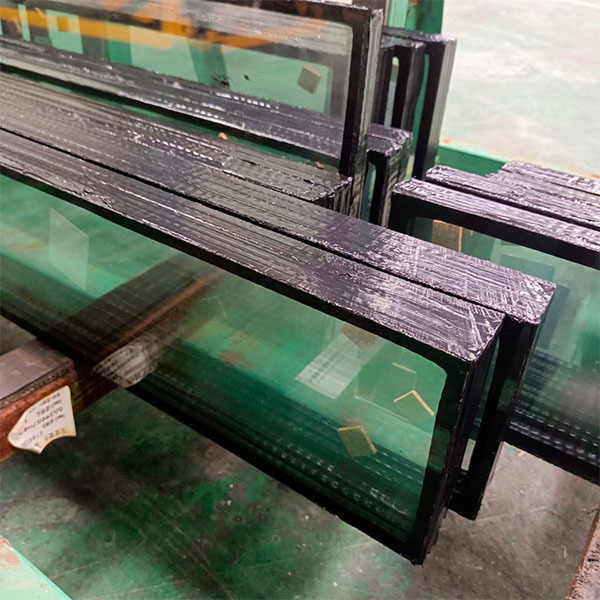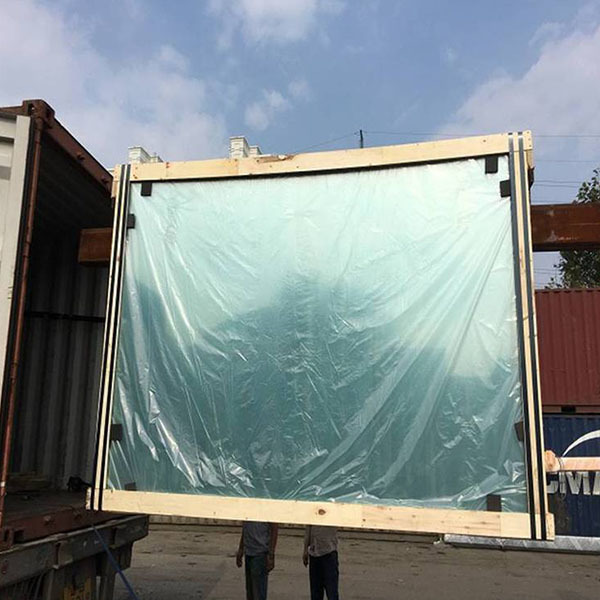Understanding the Benefits of Insulated Glass for Energy Efficiency in Modern Construction
Release Time:
2025-10-12
Understanding the Benefits of Insulated Glass for Energy Efficiency in Modern Construction Table of Contents What is Insulated Glass? Key Benefits of Insulated Glass How Insulated Glass Enhances Energy Efficiency Different Types of Insulated Glass Applications of Insulated Glass in Construction Choosing the Right Insulated Glass for Your Project Installation and Maintenance of Insulated Glass Fre
Understanding the Benefits of Insulated Glass for Energy Efficiency in Modern Construction
Table of Contents
- What is Insulated Glass?
- Key Benefits of Insulated Glass
- How Insulated Glass Enhances Energy Efficiency
- Different Types of Insulated Glass
- Applications of Insulated Glass in Construction
- Choosing the Right Insulated Glass for Your Project
- Installation and Maintenance of Insulated Glass
- Frequently Asked Questions
- Conclusion
What is Insulated Glass?
Insulated glass, commonly referred to as double glazing or triple glazing, consists of two or more panes of glass separated by a space filled with gas, typically argon or krypton. This configuration significantly improves thermal performance by reducing heat transfer between the interior and exterior environments. The air or gas between the panes serves as an insulating barrier, making insulated glass a critical component for energy-efficient building design.
Key Benefits of Insulated Glass
When considering the advantages of insulated glass, it is essential to highlight the following benefits:
1. Enhanced Energy Efficiency
Insulated glass dramatically reduces heat loss during winter and minimizes heat gain in summer. As a result, buildings equipped with insulated glass enjoy stable indoor temperatures, leading to reduced reliance on heating and cooling systems.
2. Noise Reduction
Insulated glass not only improves thermal insulation but also acts as a sound barrier. The air or gas-filled space between the glass panes dampens sound transmission, making it ideal for urban environments where noise pollution is prevalent.
3. UV Protection
Insulated glass can be treated with low-emissivity (Low-E) coatings that reflect UV rays. This feature protects interiors from fading and damage, extending the lifespan of furnishings and flooring.
4. Increased Property Value
Investing in insulated glass enhances the marketability and value of a property. Energy-efficient features are increasingly desirable among homebuyers, making insulated glass a valuable addition.
5. Environmental Impact
By reducing energy consumption, insulated glass contributes to a lower carbon footprint. Buildings that utilize insulated glass are more sustainable, supporting global efforts to combat climate change.
How Insulated Glass Enhances Energy Efficiency
Insulated glass promotes energy efficiency through several mechanisms:
1. Thermal Conductivity
The multiple layers of glass and the insulating gas used minimize thermal conductivity, which is the rate at which heat passes through materials. This results in a substantial decrease in heat loss during colder months and heat gain when temperatures rise.
2. Solar Heat Gain Coefficient (SHGC)
Insulated glass can be designed to optimize solar heat gain. By choosing the appropriate glass type, builders can manage the amount of sunlight entering a space, enhancing comfort while minimizing the energy required for heating and cooling.
3. Air Leakage Prevention
Properly sealed insulated glass units prevent air infiltration, which is a common cause of energy loss in buildings. By ensuring a tight seal, insulated glass reduces drafts and maintains consistent indoor temperatures.
Different Types of Insulated Glass
Understanding the various types of insulated glass available is crucial for selecting the right product for your needs:
1. Double Glazing
This is the most common form of insulated glass, consisting of two panes with a spacer bar and gas fill. It provides excellent thermal insulation and is widely used in residential applications.
2. Triple Glazing
Triple glazing features three panes of glass, offering superior thermal performance. It is particularly beneficial in extreme climates where energy efficiency is paramount.
3. Low-E Insulated Glass
Low-E insulated glass incorporates a special coating that reflects thermal radiation while allowing visible light to pass through. This type of glass is particularly effective in reducing energy costs.
4. Laminated Insulated Glass
Laminated insulated glass combines the benefits of insulation with added safety and security. It consists of two or more panes of glass bonded together by a plastic interlayer, which holds the glass in place if shattered.
Applications of Insulated Glass in Construction
Insulated glass has a diverse range of applications across various sectors:
1. Residential Buildings
In homes, insulated glass is used in windows and doors to enhance energy efficiency while providing aesthetic appeal. Homeowners benefit from reduced energy bills and increased comfort.
2. Commercial Buildings
Insulated glass is essential in office buildings and retail spaces, where energy efficiency can lead to significant cost savings. Its soundproofing capabilities also create a more pleasant working environment.
3. Facade Systems
Modern architectural designs often incorporate large glass facades. Insulated glass allows for striking visuals while maintaining energy efficiency and comfort within the building.
4. Skylights and Roof Windows
Integrating insulated glass into skylights and roof windows maximizes natural light while minimizing heat loss. This application is popular in residential and commercial settings alike.
Choosing the Right Insulated Glass for Your Project
Selecting the appropriate insulated glass involves several considerations:
1. Climate Considerations
Evaluate the climate in which the building is located. For regions with extreme temperatures, triple glazing may provide the necessary insulation.
2. Energy Performance Ratings
Review the energy performance ratings of various insulated glass products. Look for units with low U-values (for heat loss) and appropriate SHGC ratings.
3. Aesthetic Preferences
Consider the architectural style and design needs of the building. Insulated glass is available in various styles and finishes to complement different aesthetics.
4. Budget
While insulated glass can be a higher upfront investment, the long-term energy savings often justify the cost. Assess the budget carefully to make the most informed decision.
Installation and Maintenance of Insulated Glass
Proper installation and maintenance are critical to ensuring the longevity and performance of insulated glass:
1. Professional Installation
It is advisable to hire experienced professionals for the installation of insulated glass. Proper sealing and adherence to building codes are essential for optimal performance.
2. Regular Maintenance
Routine inspections of insulated glass units can help identify any issues early on. Cleaning the glass and checking seals can prevent problems that may compromise energy efficiency.
Frequently Asked Questions
1. What is the lifespan of insulated glass?
The average lifespan of insulated glass is around 20-25 years, depending on the quality of the product and installation.
2. Can insulated glass be repaired?
In many cases, insulated glass units can be repaired if the seal is broken; however, replacement may be necessary for severe damage.
3. Is insulated glass more expensive than regular glass?
Yes, insulated glass typically has a higher upfront cost, but it offers long-term savings through reduced energy bills.
4. Can I use insulated glass in existing windows?
Yes, insulated glass can often be retrofitted into existing window frames, improving energy efficiency without a complete window replacement.
5. How does Low-E glass work?
Low-E glass uses a thin metallic coating to reflect heat while allowing visible light to pass through, thus enhancing energy savings.
Conclusion
In conclusion, insulated glass represents a significant advancement in energy-efficient building practices. Its ability to reduce heat transfer, enhance comfort, and minimize energy costs makes it an essential choice for both residential and commercial properties. By understanding the benefits, types, and applications of insulated glass, builders and homeowners can make informed decisions that contribute to sustainability and improved living conditions. Investing in insulated glass is not just about creating a comfortable environment; it's about being responsible stewards of our planet and ensuring future generations inherit a thriving world.



